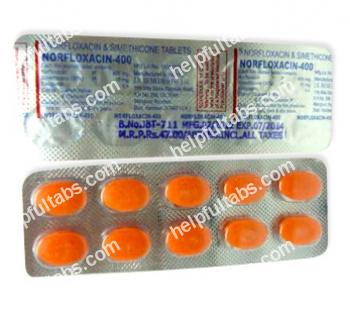









| Country | Shipping method | Delivery time | Price | |
|
|
 Delivery Delivery |
14-21 days | 10$ | Tracking# available in 4 days |
 Delivery Delivery |
9-14 days | 30$ | Tracking# available in 2 days |
Noroxin is a quinolone antibiotic used to treat urinary tract infections (such as pyelonephritis, cystitis, and urethritis), genital infections (like prostatitis, cervicitis, endometritis), gastrointestinal infections (including salmonellosis and shigellosis), and uncomplicated gonorrhea. Its mechanism of action involves inhibiting DNA gyrase, which destabilizes bacterial DNA and leads to the death of susceptible bacteria. Noroxin is effective against Staphylococcus spp. (including Staphylococcus aureus), Neisseria spp., E. coli, Citrobacter spp., Klebsiella spp., Proteus spp., Salmonella spp., Enterobacter spp., Hafnia, Shigella spp., Mycobacterium tuberculosis, Vibrio cholerae, Haemophilus influenzae, Chlamydia spp., Mycoplasma spp., and others. The medication remains active for 12 hours.
For urinary tract infections, take 400 mg of Noroxin twice daily for 7-10 days. For non-complicated cystitis, treatment lasts 3-7 days, while recurrent chronic urinary tract infections may require up to 12 weeks of treatment. For prostatitis, the recommended daily dose is 800 mg, divided into two doses, for four weeks. For gonorrhea, a single dose of 800 mg is recommended. The maximum daily dose is 800 mg. Take Noroxin with a full glass of water, either two hours after a meal or one hour before. Drink plenty of water while using this medication to prevent the formation of needle-shaped crystals in your urine. Elderly patients or those with kidney problems may require adjusted dosages or kidney function monitoring. Always follow your doctor's instructions and do not start or stop treatment without their approval.
Regular kidney function monitoring is necessary for elderly patients and those with kidney impairment. Noroxin may cause photosensitivity, so avoid direct sunlight during treatment. Limit alcohol consumption, as it can worsen side effects like dizziness and drowsiness, which may impair your ability to operate machinery or drive.
Noroxin should not be used by individuals with hypersensitivity to the medication, pregnant or breastfeeding women, children under 18, or those with glucose-6-phosphate dehydrogenase deficiency. Caution is advised for patients with cerebral arteriosclerosis, cerebrovascular dysfunctions, epilepsy, epileptic syndrome, myasthenia gravis, or kidney or liver failure.
Common side effects include weakness, headache, drowsiness, dizziness, nausea, and stomach upset. Rare but serious side effects may include tremors, sun sensitivity, seizures, mood changes, sore throat, fever, vision changes, hearing loss, changes in urine, jaundice, fainting, irregular heartbeat, easy bruising, bleeding, or numbness in extremities. Tendon damage and muscle weakening are rare but possible. Discontinue exercise and seek medical attention if you experience joint or tendon pain. If pseudomembranous colitis (persistent diarrhea, abdominal pain, or blood/mucus in stool) occurs, avoid anti-diarrhea medications and notify your doctor immediately. Prolonged use may lead to oral thrush or vaginal yeast infections. Seek immediate medical help if you experience an allergic reaction (rash, itching, swelling, trouble breathing).
Reduce theophylline dosage while taking Noroxin. Noroxin may increase blood levels of indirect anticoagulants and cyclosporine while reducing the effects of nitrofurans. Antacids containing aluminum, magnesium, iron, zinc, or sucralfate should be taken at least four hours apart from Noroxin. Combining Noroxin with medications that lower the seizure threshold may trigger epileptic attacks. Concurrent use with blood pressure or heart rhythm medications may cause sudden blood pressure drops or heart rhythm changes. Inform your doctor about all medications and supplements you are taking.
Take the missed dose as soon as you remember, unless it is almost time for your next dose. In that case, skip the missed dose and continue with your regular schedule. Do not double the dose to make up for the missed one.
Symptoms of overdose include dizziness, nausea, vomiting, drowsiness, cold sweats, and puffy face without significant hemodynamic changes.
Store Noroxin at room temperature in a tightly closed container, away from moisture and humidity.
This information provides a general overview of Noroxin and does not cover all directions, possible drug interactions, or precautions. It is not intended for self-diagnosis or self-treatment. Always consult your healthcare provider for specific instructions tailored to your condition. We disclaim any responsibility for the reliability of this information or any consequences resulting from its use or self-treatment.